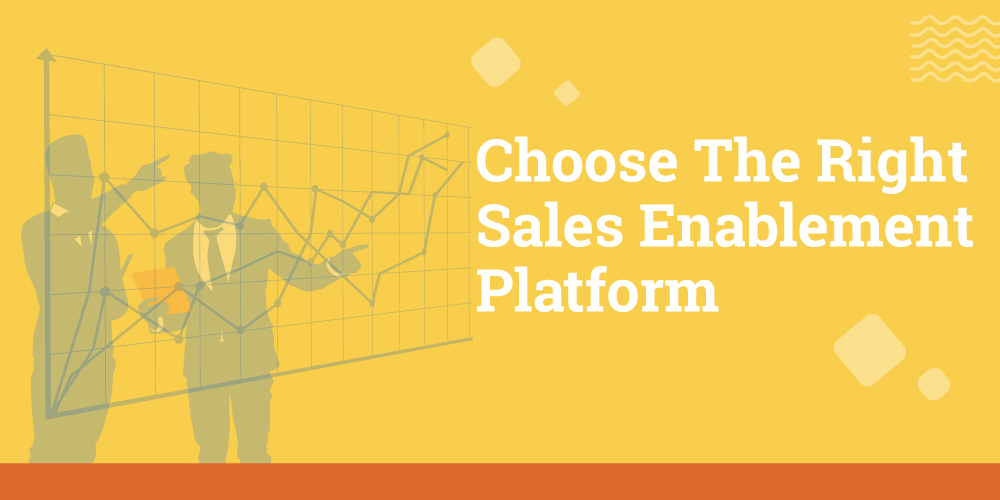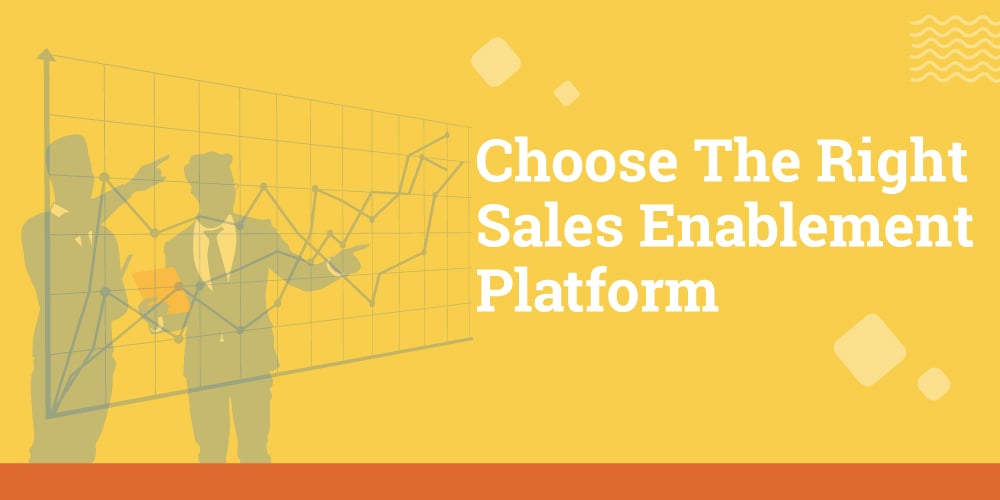The sales enablement platform is a growing trend in sales organizations, thanks to an emphasis on data-driven insights, automation, and a new take on the classic sales funnel.

Sales leaders are doing their part to help companies leverage their data assets to their potential. This requires organizations to incorporate the right tools that can collect, sort, and analyze data to make informed business decisions and grow revenue.
Sales enablement platforms do all of the above and are positioned to give businesses the best value for every dollar spent.
What is Sales Enablement?
By definition, sales enablement is the action of giving sales teams the tools, content, and information they need in order to sell effectively. It’s a collection of everything the sales rep needs in order to engage and communicate with prospects at every stage of the customer journey.

Therefore, a sales enablement platform is the technology that facilitates these tools. The platform should provide a comprehensive solution to sales enablement to create a seamless, consistent approach to sales.
Common Features of a Sales Enablement Platform
Not all sales enablement platforms are created equal. If they were, there wouldn’t be so many of them! Businesses should to explore the ins and outs of the platform they’re considering to see how it will help them reach sales objectives. Here are a few of the most common features you can expect, in no particular order:
Lead Qualification, Scoring, & Distribution
When leads enter the sales funnel, sales enablement tools give each lead its best chance of a conversion.
Leads first undergo a qualification process to determine their validity. In some cases, leads may never make it to the sales team because they lack critical information, are duplicates, or otherwise, don’t meet your company’s standards.
From there, leads can be scored based on readiness or likelihood of converting. Sales teams can prioritize high-scoring leads to strike while the iron is hot. This helps to cut down on the length of the buying cycle and helps you to maximize your resources.
Leads should be distributed appropriately so that sales reps receive only those leads they have a shot at closing. For example, sales teams should only see leads for the products they are trained to sell.
Marketing Automation
Automation has come a long way, especially as it pertains to marketing. Everything from social media posts to email campaigns can be automated, which makes for less manual work for sales and marketing teams.
Companies can use marketing automation to tailor experiences to specific buyers at scale. For example, leads entering your funnel from a Facebook promotion might receive different email nurturing campaigns that those who were interested in a product they saw in a paid search ad.
Sales Content Database
When reps are interacting with prospects, they need their sales content readily available to support the process. Sales enablement platforms serve as storage hubs for sales reps to access the content they need to move the customer journey forward.
Reporting
All the data you collect in your platform is essentially useless unless you have a way to organize it. Reporting tools can help you compile and analyze information to help you make informed business decisions.
Granted, this is far from being a complete list of features, but it should give you an idea as to the scope these tools offer and how they can support sales initiatives.
How to Choose the Right Platform for Your Objectives
The options for sales enablement platforms can be overwhelming. It’s not an easy task, but knowing what to prioritize can help you make an informed decision:

What are your sales organization’s goals?
If you’re migrating to a new sales enablement tool, there needs to be something motivating your decision. What are your goals (or reasons for change) that make you want to pursue a new solution? Knowing this, you’re better positioned to explore the right options.
How steep is the learning curve?
Consider how long it will take your reps to learn and use the system. Learning curves can vary between solutions, which can affect how soon you’ll start to see an ROI from your investment. Look for a platform that’s intuitive, simple, and streamlined so you can see results faster.
What business problems are being solved?
Look at the sales enablement platform from a business case: does it solve the specific problems you’re experiencing? Will it help to make your company more profitable?
Does it offer mobile capabilities?
Outside field reps can benefit from sales enablement tools, too. Make sure your platform offers mobile capabilities so they can help you reach business objectives.
What’s your budget for a sales enablement platform?
It can be disheartening to find a viable solution only to find out you can’t afford it. Start with a loose budget in mind, then explore options that fall within your reach. If a more expensive solution offers enough value to justify the cost, you may choose to adjust your budget later.
How LeadSquared Can Help
Hundreds of companies are using LeadSquared as a complete sales enablement platform. Features for marketing and sales alike help to bridge the gaps that other tools leave behind, giving you a seamless approach to the entire customer journey.
Find out more with a free 15-day trial and see how LeadSquared is helping companies use fewer resources to drive more revenue.









